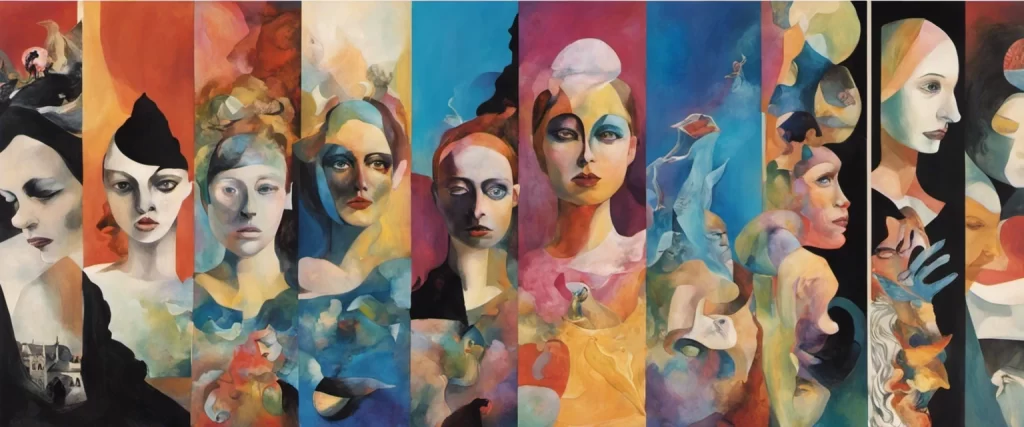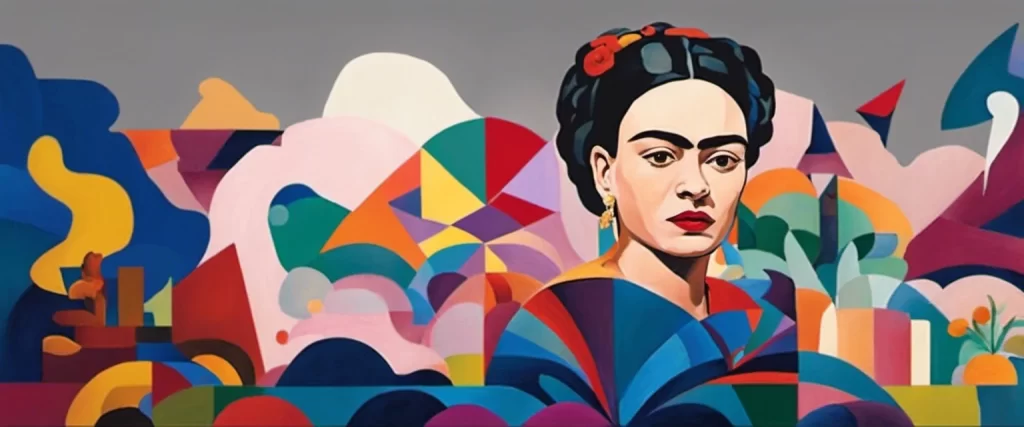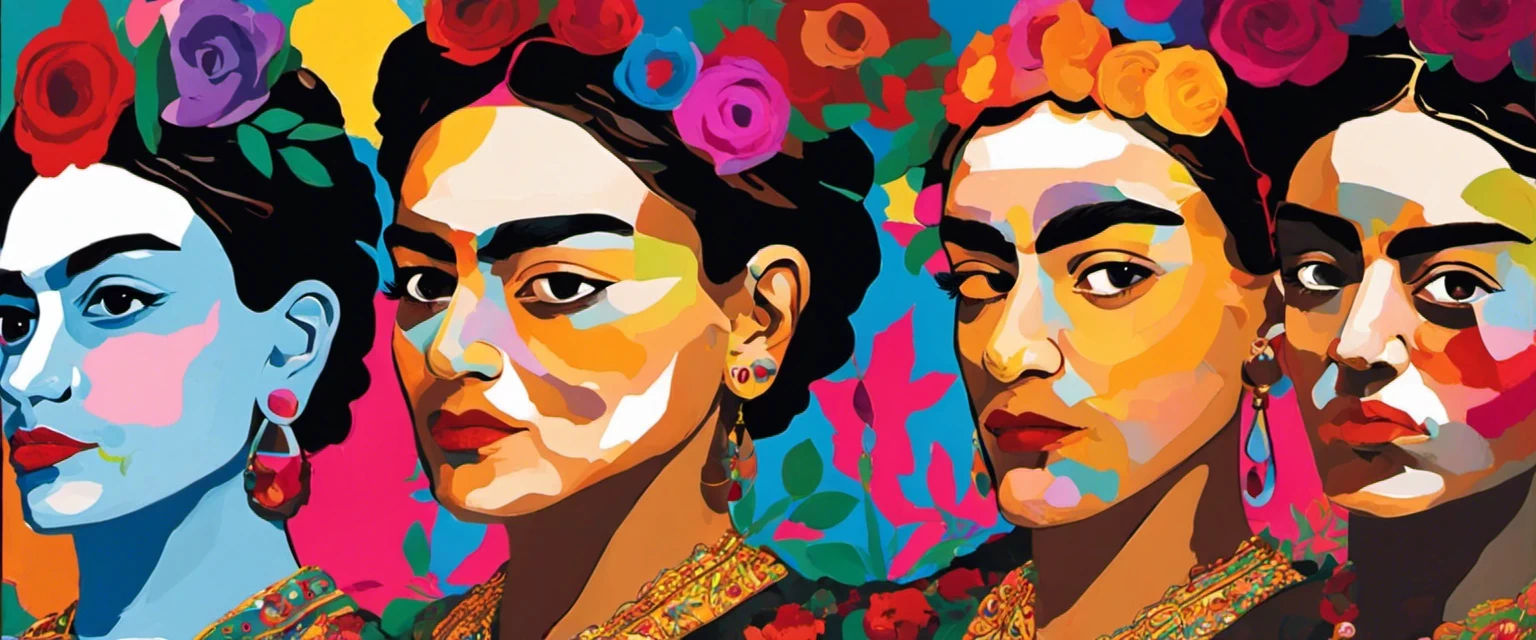—Frida & Surrealist Women: An International Anthology
The realm of literature often presents us with powerful narratives that highlight the struggles, triumphs, and unique perspectives of artists, particularly women. Two works that delve into the lives and artistry of women who shattered societal norms are “Frida” by Hayden Herrera and “Surrealist Women: An International Anthology” edited by Penelope Rosemont. While both books explore the lives and artistic contributions of women, they do so through different lenses, provoking intriguing questions about gender, creativity, and the impact of society on artistic expression.
“Frida,” penned by Hayden Herrera, is a comprehensive biography that attempts to peel back the layers of the enigmatic artist, Frida Kahlo. Herrera delves into Kahlo’s life, her tumultuous relationship with Diego Rivera, and the transformative influence of her Mexican heritage on her art. By examining Kahlo’s personal correspondence, medical records, and artwork, Herrera provides readers with a deeper understanding of the artist’s motivation and creative process. “Frida” not only presents a compelling narrative but also offers a nuanced exploration of Kahlo’s role as a feminist icon and her immense impact on the art world.
On the other hand, Penelope Rosemont’s “Surrealist Women: An International Anthology” takes a collective approach to capturing the essence of a movement. This anthology brings together the voices and artistic expressions of numerous women associated with surrealism and showcases their contributions to the development of this avant-garde movement. Rosemont’s editorial expertise acts as a guiding force, expertly threading together an array of writings, poetry, and visual art created by diverse surrealist women from around the world. Through her selection process, Rosemont shines a spotlight on the subversive and boundary-breaking nature of these women’s work, ultimately challenging traditional notions of gender, sexuality, and creativity.
In this comparative study, we will delve into these two works, juxtaposing the focused exploration provided by “Frida” against the broader, all-encompassing perspective offered by “Surrealist Women: An International Anthology.” By examining the books’ content, style, and underlying motivations, we will explore how they capture the nuanced experiences of women artists, shedding light on the multifaceted struggles and triumphs they encountered in their pursuit of artistic expression. Additionally, we will explore the impact of social, cultural, and political contexts on the lives and works of these female artists, emphasizing the clashes, shared experiences, and interconnectedness revealed within the narratives of both books.
Through this comparative study, we hope to deepen our understanding of the intricacies and complexities surrounding the lives of women artists, and to gain fresh insights into the power of art as a tool for self-expression and societal transformation. By examining the lives and works of Frida Kahlo and surrealist women, we will encounter stories of perseverance, resilience, and rebellion, ultimately leading us to a greater appreciation of the diverse contributions made by women to the art world.
Brief Summary of Two Books
Frida by Hayden Herrera
Frida” by Hayden Herrera is a biographical account of the life of Mexican artist Frida Kahlo. The book explores Kahlo’s turbulent and tragic life, starting from her childhood in Mexico City to her marriage to renowned painter Diego Rivera. It delves into Kahlo’s struggles with physical and emotional pain, her artistic journey, and her unique style that blended indigenous Mexican culture with surrealism. The book also highlights Kahlo’s complex relationships, including her affairs with both men and women, as well as her political activism. Ultimately, “Frida” offers readers an intimate and comprehensive portrayal of the artist, showcasing her resilience, courage, and enduring legacy.
Surrealist Women: An International Anthology edited by Penelope Rosemont
Surrealist Women: An International Anthology edited by Penelope Rosemont is a compilation of writings and artwork by various influential women associated with the Surrealist movement. The book offers a diverse collection of texts ranging from manifestos, poems, essays, and personal narratives, along with striking visual artwork. Revealing the genuine and powerful voices of these women, the anthology challenges the traditional male-dominated narrative of Surrealism and highlights the significant contributions that women made to the movement. By highlighting the daring and often subversive ideas of these women, Surrealist Women provides a comprehensive look into the revolutionary aesthetic and philosophical ideas that shaped Surrealism as a whole.
Comparison between Two Books

Similarities in Frida Kahlo
Both books, Hayden Herrera’s “Frida” and Penelope Rosemont’s “Surrealist Women: An International Anthology,” focus on Frida Kahlo and her role as a prominent figure in art history. Despite being written from different perspectives, they share some similarities in their depiction of Kahlo:
1. Exploring Kahlo’s art and life: Both books delve into Kahlo’s personal and artistic journey. They highlight her struggles, physical pain, and emotional trauma, while also examining her creative process and the symbolism behind her artwork.
2. Feminist perspective: Both books emphasize Kahlo’s significance as a female artist in a male-dominated art world. They discuss how Kahlo’s work challenged traditional gender roles and questioned societal expectations, making her a prominent figure in the feminist movement.
3. Impact of surrealism: Both books acknowledge the influence of surrealism on Kahlo’s artistic expression. While “Frida” focuses more on her personal style and unique symbolism, “Surrealist Women” places her within the broader context of the surrealist movement and highlights connections with other female artists.
4. Personal relationships: Both books explore Kahlo’s relationships, particularly her complex marriage to the renowned Mexican artist Diego Rivera. They discuss the tumultuous nature of their union, their multiple affairs, and the impact these experiences had on Kahlo’s art.
5. Physical and emotional pain: Both books touch upon Kahlo’s physical ailments resulting from a debilitating bus accident she suffered as a young woman. They also delve into the emotional turmoil she experienced due to her physical limitations, infertility, and intense emotions, all of which are reflected in her art.
6. Cultural and political context: Both books provide historical context to Kahlo’s life and art, discussing the social and political climate in Mexico at the time. They address the influence of her Mexican heritage, indigenous culture, and political beliefs, offering a deeper understanding of Kahlo’s work and its significance.
Although written from different perspectives, “Frida” and “Surrealist Women” share common themes and insights into the life and art of Frida Kahlo. Both books contribute to the comprehensive understanding of Kahlo’s significant contributions to art history and her enduring legacy as an influential artist.
Divergences in Frida Kahlo
Frida Kahlo is an iconic figure in the world of art and has long fascinated readers, resulting in numerous books being written about her life and works. Two notable examples are “Frida” by Hayden Herrera and “Surrealist Women: An International Anthology” edited by Penelope Rosemont.
While both books delve into Frida Kahlo’s life and artistic contributions, they differ in their approach and focus. “Frida” by Hayden Herrera is a comprehensive biography that aims to provide a detailed account of Kahlo’s life, from her childhood to her tragic accident, turbulent marriage to Diego Rivera, and her artistic journey. The book offers insight into Kahlo’s personal struggles, her relationship with other artists, and the cultural context in which she lived. Herrera’s work is often praised for its thorough research and engaging narrative, making it a popular choice for those seeking a comprehensive understanding of Kahlo’s life.
On the other hand, “Surrealist Women: An International Anthology” edited by Penelope Rosemont takes a broader approach by showcasing the works of numerous female Surrealist artists, including Frida Kahlo. This anthology aims to highlight the contributions of women to the Surrealist movement, featuring their art, writings, manifestos, and interviews. While the book offers glimpses into Kahlo’s life and artistic philosophy, it does not extensively explore her personal biography or delve into her works in the same depth as Herrera’s biography.
In terms of the divergence about Frida Kahlo, “Frida” by Hayden Herrera mainly focuses on her individual journey as an artist, her struggles with physical and emotional pain, and her unapologetic self-expression through her artwork. The biography delves into Kahlo’s Mexican heritage, her exploration of identity, and the impact of her physical disability on her art. Herrera’s book offers a far more intimate portrayal of Kahlo’s personal life, thoughts, and emotions.
Contrastingly, “Surrealist Women: An International Anthology” places Kahlo within the larger context of the Surrealist movement and features her as one of several influential female artists. It highlights Kahlo’s key works and their Surrealist elements, analyzing how she contributed to the movement’s ideas and techniques, while also presenting her writings and thoughts on art. The divergence lies in the anthology’s wider perspective, focusing on the collective contributions of women artists to Surrealism, rather than solely on Kahlo herself.
In summary, while both “Frida” by Hayden Herrera and “Surrealist Women: An International Anthology” edited by Penelope Rosemont touch upon Frida Kahlo’s life and art, they diverge in their approach. Herrera’s biography provides an in-depth account of Kahlo’s personal journey, highlighting her struggles, relationships, and unique artistic expression. On the other hand, Rosemont’s anthology positions Kahlo within the broader context of Surrealism, showcasing her as one of many influential women artists who contributed to the movement. Ultimately, readers interested in Kahlo may find Herrera’s biography more fulfilling in terms of understanding her individual story, while Rosemont’s anthology offers a broader appreciation of Kahlo within the Surrealist movement.

Conclusion
Both books have their merits, so the choice ultimately depends on your interests and what you are looking to gain from reading.
“Frida” by Hayden Herrera is a highly acclaimed biography of the famous Mexican artist Frida Kahlo. It delves into her life, artwork, and the turbulent times in which she lived. If you are specifically interested in Frida Kahlo’s life and her contributions to art, this book would be a great choice. It provides detailed insights into her experiences, struggles, and artistic development.
On the other hand, “Surrealist Women: An International Anthology” edited by Penelope Rosemont offers a broader perspective on the surrealist movement and the many women artists involved. It features writings, artwork, manifestos, and biographical sketches of women from various countries and different time periods. If you are interested in understanding the contributions of women to surrealism and exploring their unique perspectives, this anthology would be a valuable resource.
In summary, if you are primarily interested in Frida Kahlo and want an in-depth exploration of her life and art, “Frida” by Hayden Herrera would be the more suitable choice. However, if you are intrigued by surrealism in general and the work of female surrealist artists from around the world, “Surrealist Women: An International Anthology” edited by Penelope Rosemont would be a more comprehensive and diverse read.



